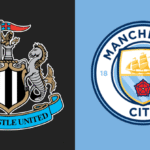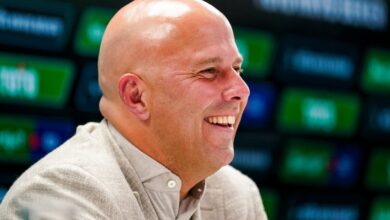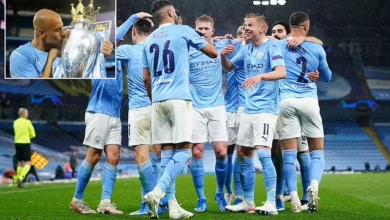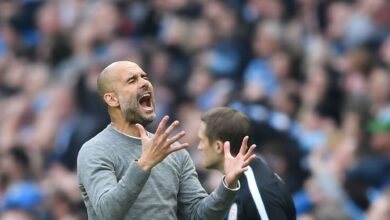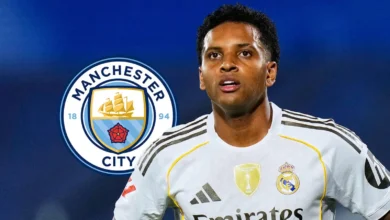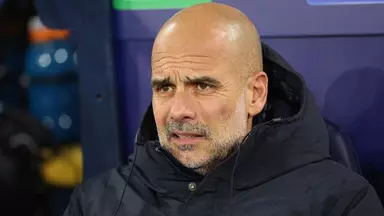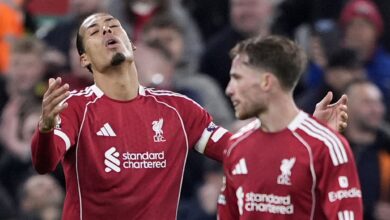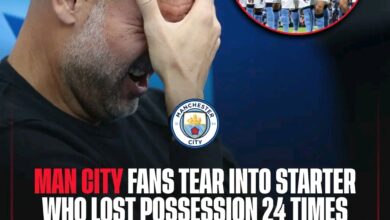‘Writing on the wall’ – what does future hold for Grealish?
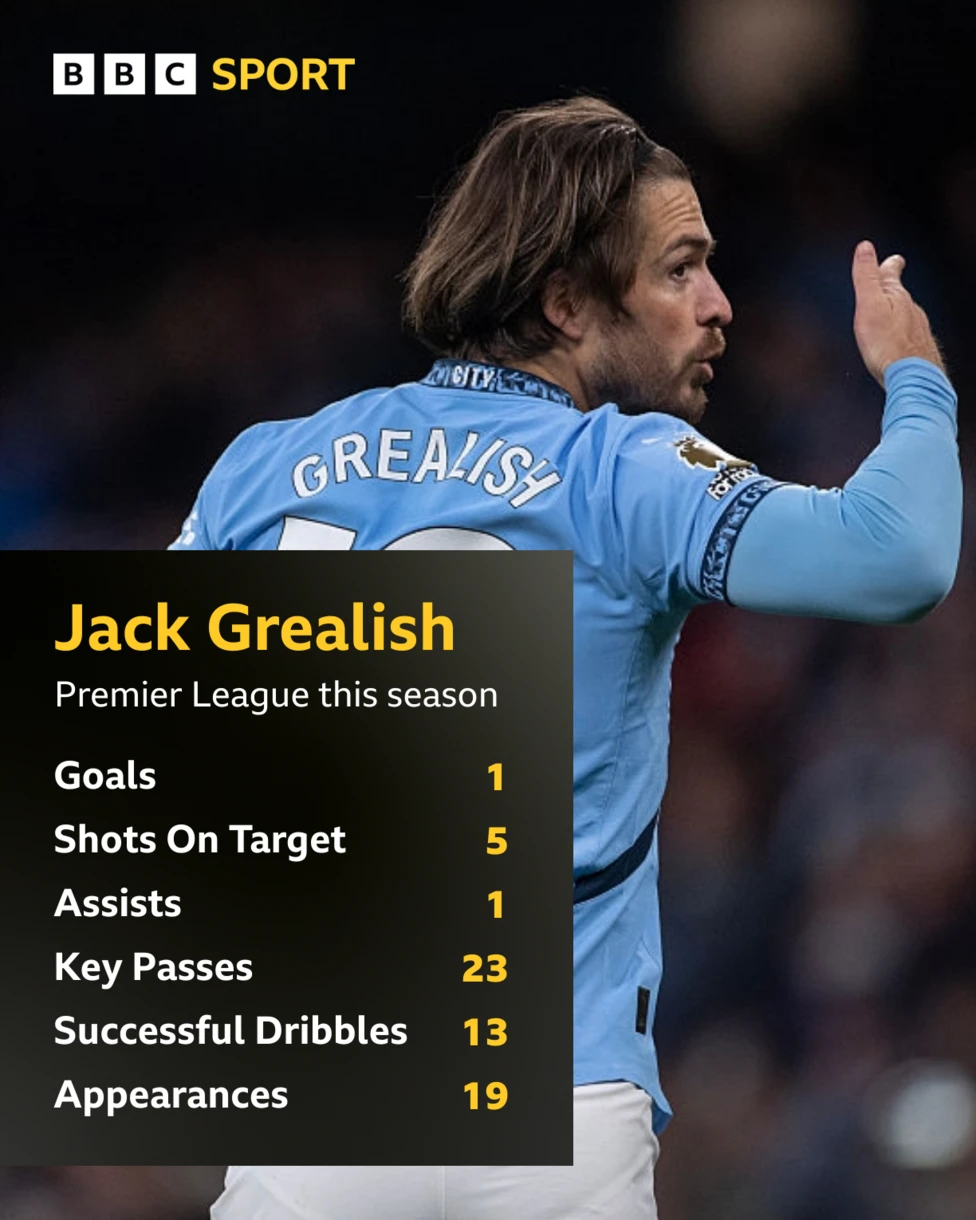
When Jack Grealish completed his British record £100 million move from Aston Villa to Manchester City in the summer of 2021, the football world watched with bated breath. Here was a player whose flair, creativity, and unorthodox style had captivated Premier League audiences, making the leap to a club where tactical discipline and system adherence were paramount under Pep Guardiola’s exacting standards.
Four years on, what began as a promising union that delivered major silverware now appears to be reaching its conclusion, with former City goalkeeper Shay Given declaring that “the writing is on the wall” for the England international at the Etihad Stadium.
“I have a soft spot for Jack Grealish and the way he is being treated is not on,” Given, who played alongside Grealish at Aston Villa, told BBC Radio 5 Live’s Monday Night Club. “He’s not helped himself at times, but he is a generational talent that you want to build your team around.”
The numbers tell a stark story of Grealish’s fading influence at City. In the 2022-23 season, when City achieved the coveted treble of Premier League, FA Cup, and Champions League, Grealish was an integral part of the squad, appearing in 82% of City’s games across all competitions, accumulating over 3,000 minutes on the pitch, and making telling contributions in crucial matches.
Fast forward to the current campaign, and Grealish’s playing time has plummeted dramatically. He has started just 16 matches in all competitions, totaling only 1,520 minutes – less than half of his previous season’s tally. The player who once seemed indispensable at Villa Park has become increasingly peripheral under Guardiola.
The Wembley Heartbreak
Perhaps nothing symbolizes Grealish’s fall from grace more poignantly than his experiences in City’s recent FA Cup finals. For the second consecutive year, Grealish was an unused substitute as City tasted defeat at Wembley – first to Manchester United in 2024, and then to Crystal Palace in the shock result of last weekend.
The sight of Grealish, a £100 million British record signing, remaining on the bench while City chased the game against Palace was particularly telling. Even more revealing was Guardiola’s decision to introduce 18-year-old Argentinian midfielder Claudio Echeverri for his debut rather than turn to the experienced Grealish.
“At the weekend City brought on Claudio Echeverri who made his debut instead,” noted Given with evident frustration. “Jack is an international, a multiple winner, it was criminal he didn’t get on the pitch. The writing is on the wall. I don’t know why Pep even brought him to London. He may as well have stayed at home.”
For a player who thrives on confidence and self-expression, these public displays of diminishing trust can only be damaging to Grealish’s morale and standing within the squad.
The Statistical Decline
The raw numbers paint a concerning picture for Grealish’s City career. Since his arrival in 2021, he has scored just 17 goals in all competitions – a modest return for an attacking player who commanded such a substantial transfer fee. This season’s contribution has been particularly sparse, with his Premier League involvement showing a marked decline across all key metrics:
- Minutes played: Down by more than 50% compared to 2022-23
- Goals: A significant reduction from his best City season
- Assists: Fewer than half compared to the treble-winning campaign
- Chances created: A substantial drop-off in creative output
- Successful dribbles: Reduced opportunities to showcase his ball-carrying abilities
The decline isn’t simply about playing time; when Grealish has featured, his role has appeared increasingly constrained. As Given observed, “When he plays, he’s a mannequin on the wing and just told to keep the shape.” This is a far cry from the free-spirited player who used to drive Villa forward with his dribbling ability and creative vision.
The Guardiola Factor
Understanding Grealish’s situation requires examining Pep Guardiola’s evolving tactical approach at Manchester City. When Grealish was signed, he appeared to be the perfect fit for Guardiola’s possession-based system that values technically gifted players who can retain the ball under pressure.
Guardiola initially deployed Grealish primarily as a left winger in his 4-3-3 formation, where the Englishman was tasked with holding width, creating overloads with the left-back, and cutting inside when opportunities arose. During City’s treble-winning season, this approach bore fruit as Grealish adapted to the positional discipline required while still finding moments to express his natural creativity.
However, this season has seen Guardiola experiment with different tactical setups, often favoring Jeremy Doku’s direct pace on the left wing or Phil Foden’s technical ability in central areas. The emergence of younger talents coupled with Grealish’s occasional inconsistency has seen him gradually slide down the pecking order.
When questioned about Grealish’s future following the FA Cup final defeat, Guardiola was characteristically diplomatic yet noncommittal: “We didn’t talk – I didn’t talk with him,” the Catalan manager stated. “People don’t believe me, but these things belong to the agents and the club and Txiki, and in this case Hugo as well. Both will decide.”
He added: “What is going to happen will happen, but he has to come back to start to play minutes again. It’s not only Jack. There is not one player in my locker room, and I think all the locker rooms around the world, that is happy when they do not play.”
This response suggests that while Guardiola hasn’t explicitly pushed Grealish toward the exit door, he’s not actively fighting to keep him either – a telling stance given the significant investment City made in acquiring the player.
A Season of Struggles
City’s overall performance this season provides important context for Grealish’s individual struggles. For the first time since Guardiola’s inaugural 2016-17 campaign, Manchester City will end a season without a major trophy. The FA Cup final defeat to Crystal Palace capped a disappointing year that sees them sitting in sixth place in the Premier League with just two games remaining.
The unthinkable prospect of missing out on Champions League qualification now looms over the Etihad Stadium, which would represent a seismic failure for a club that has dominated English football for much of the past decade.
In this context of collective underperformance, individual players like Grealish have come under increased scrutiny. The £100 million price tag, which once seemed a shrewd investment during the treble-winning campaign, now feels like an albatross around both the player’s and club’s neck as returns on that record outlay diminish.
The Personal Journey
Beyond the tactical and statistical analysis lies the human story of Grealish’s Manchester City experience. The Birmingham-born midfielder arrived at City as a cultural phenomenon – his distinctive playing style, complete with rolled-down socks and boyish enthusiasm, had earned him cult hero status at Villa Park and made him a fan favorite across the country.
The adjustment to life at City meant adapting to a very different environment. At Villa, Grealish was the undisputed star around whom the team was built. At City, he became one outstanding talent among many, required to sublimate his individual instincts for the collective good.
Initially, this transition appeared successful. Grealish embraced the challenge, modified aspects of his game, and contributed valuably to City’s historic treble achievement. Off the field, he became a popular figure in the dressing room, with teammates and staff warming to his unpretentious, affable personality.
However, maintaining the delicate balance between personal expression and tactical discipline has proven increasingly challenging. Moments of frustration have been evident this season, with Grealish’s body language sometimes betraying his diminishing confidence as opportunities became scarcer.
The player who once lit up Villa Park with his fearless dribbling and creative flair has, at times, appeared hesitant and overly cautious in a City shirt – perhaps a symptom of trying too hard to conform to Guardiola’s precise requirements at the expense of the natural instincts that made him special in the first place.
What Next for Grealish?
As the summer transfer window approaches, Grealish faces perhaps the most significant crossroads of his professional career. At 29, he should be entering his prime years as a footballer, but his development risks stagnation if he remains in a peripheral role at City.
Given believes a parting of ways may be inevitable and potentially beneficial for Grealish’s career: “Kevin de Bruyne is leaving in the summer and Jack Grealish is the perfect replacement to play in the middle, but after what has happened, he maybe won’t play for the club again. For his career, he has to see what is out there. He is an amazing talent with plenty of years left in him.”
Several options potentially lie before Grealish:
Staying and Fighting
One path would be to remain at City and fight to reclaim his place in Guardiola’s plans. The expected departure of Kevin De Bruyne could theoretically create an opening for Grealish to reinvent himself in a more central role, returning to the type of position he occasionally occupied at Villa.
However, Given’s assessment suggests that the damage to the relationship between player and manager may already be too severe for this to be viable. Guardiola’s decision to leave Grealish unused in consecutive cup finals speaks volumes about his current standing.
A Premier League Move
Several Premier League clubs would undoubtedly be interested in securing Grealish’s services if he became available. A return to Aston Villa would represent a romantic full-circle moment, though the club’s evolution under Unai Emery means they’re no longer the same team Grealish left behind.
Newcastle United, with their Saudi-backed financial resources, could potentially afford both the transfer fee and wages, while offering Grealish the chance to be a central figure in their ambitious project. Similarly, Tottenham Hotspur might view him as an ideal creative replacement if they lose their own stars.
The European Option
A move abroad could provide Grealish with a fresh start away from the intense Premier League spotlight. Italy’s Serie A, with its traditionally more measured tempo, might suit Grealish’s technical abilities, while Spain’s technical emphasis could also complement his playing style.
Paris Saint-Germain, always in the market for marquee talents, could be tempted to make a move, particularly if they lose Kylian Mbappé this summer as expected. The French champions have shown willingness to invest in Premier League talent previously and might view Grealish as a marketable asset as well as an on-field contributor.
The Financial Reality
Any discussion of Grealish’s future must acknowledge the significant financial considerations at play. His reported £300,000-per-week wages represent a substantial commitment that few clubs worldwide could match.
This financial reality creates a complex situation where Grealish’s market of potential suitors is inherently limited. A loan deal with Manchester City subsidizing a portion of his wages could be one solution, though the club would likely prefer a permanent sale to recoup at least part of their £100 million investment.
Alternatively, Grealish himself might need to accept a wage reduction to facilitate a move that would revitalize his career – prioritizing playing time and footballing fulfillment over financial maximization.
The England Factor
Complicating Grealish’s decision-making process is his international career with England. Despite his reduced club role, Grealish has remained in the England setup under manager Lee Carsley, who replaced Gareth Southgate after Euro 2024.
However, continuing as a peripheral figure at City inevitably endangers his international prospects ahead of the 2026 World Cup. England’s increasingly competitive talent pool means that players not featuring regularly at club level risk being overtaken by in-form alternatives.
This international dimension adds urgency to Grealish’s situation – remaining in the shadows at City for another season could jeopardize his chances of representing England at another major tournament during his prime years.
City’s Transitional Summer
Grealish’s situation unfolds against the backdrop of what promises to be a transitional summer for Manchester City. The imminent departure of influential midfielder Kevin De Bruyne, coupled with the earlier announced exit of long-time director of football Txiki Begiristain, signals the end of an era at the Etihad.
Hugo Viana, Begiristain’s successor, faces the challenge of rejuvenating a squad that has fallen short of expectations this season. Whether Grealish features in these plans or becomes part of the turnover remains to be seen, but it’s clear that significant changes are coming.
For a club accustomed to competing for the highest honors, this season’s sixth-place standing represents an unacceptable regression. The possible absence of Champions League football next season would accelerate the need for squad reconstruction, potentially making Grealish’s sizeable wages an economic burden the club would prefer to remove from their books.
The Legacy Question
Whatever happens this summer, Jack Grealish’s Manchester City story prompts reflection on how his time at the club will ultimately be remembered. Has the transfer been a success? The answer is nuanced.
On one hand, Grealish has won three Premier League titles, the Champions League, and an FA Cup during his time at City – a trophy haul many players would envy across an entire career. He contributed meaningfully to the historic treble season and has experienced the pinnacle of club football.
Conversely, the British record fee and the expectation that Grealish would develop into a transformative figure for City have not been fully realized. Seventeen goals across four seasons represents a modest return on investment, while his reduced involvement this season suggests his influence has waned rather than grown over time.
Perhaps the fairest assessment is that Grealish’s City career represents a partial success – a talented player who adapted sufficiently to contribute to a great team without ever fully imposing his individual brilliance in the manner his price tag suggested he might.
Conclusion: The Writing on the Wall
As Manchester City process their trophyless season and begin planning for the future, Jack Grealish’s situation epitomizes the ruthless nature of elite football. Yesterday’s record signing becomes today’s dispensable squad member when performances and circumstances change.
Shay Given’s assessment that “the writing is on the wall” for Grealish at City carries the weight of insider knowledge and football wisdom. The successive FA Cup final benchings, the dramatic reduction in playing time, and Guardiola’s noncommittal public comments all point toward an impending separation.
For Grealish himself, this summer represents an opportunity as much as a disappointment. At 29, with his technical ability undiminished and several productive years ahead, he has the chance to rediscover the joy and freedom that made him such a captivating player at Aston Villa.
The £100 million man finds himself at a crossroads, his City chapter potentially closing but with the possibility of an exciting new narrative waiting to be written elsewhere. For a player whose career has been defined by taking risks – from his dribbling style to his decision to leave his boyhood club – this summer may require another bold choice to reignite a career that has stalled in Manchester’s blue half.
As one chapter appears to be ending, football fans will watch with interest to see where Jack Grealish’s unique talents take him next.
